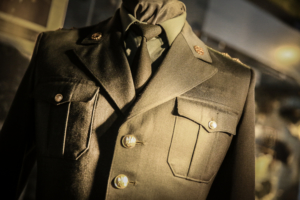Aug. 26, morning. A silo pit near the village of Ahronomichne
Wearing a Russian uniform so as not to get his Ukrainian uniform dirty, Yevheniy Sydorenko quickly approached an abandoned Т-72B3 tank on the outskirts of Ahronomichne.
The Russian soldiers – mainly of the 98th Guards Airborne Division – left the tank earlier at night when they shelled the Ukrainian military positions with artillery by the Russian soldiers and their proxies. Ukrainians suffered big losses but stood up well to the superior forces.
Sydorenko got inside the tank and started examining it. He was surprised. This Russian tank – made in 2013 and equipped with a French thermal camera, a digital radio station and improved day-and-night observation sights – was of a type the Ukrainian army had never had.
Trophy tank
Sydorenko, a tankman of Operations Command South of the Ground Forces of Ukraine’s army, thought his fellow soldiers could definitely benefit from obtaining this tank. With that in mind, he drove the tank to Mnohopillya where his unit had been stationed, and began fixing the tank’s aiming sight. He spent about three hours working on it when he suddenly heard a reconnaissance team report that a Russian military column of about 16 vehicles left Kuteinikove, some 16 kilometers south of Ilovaisk.

Yevheniy Sydorenko examines a piece of tank armor in the Ukraine’s National War History Museum (Oleg Petrasiuk).
Sydorenko knew that there were few anti-tank guns scattered in the fields around Mnohopillya, with the only squadron of Konstiantyn Koval of the 51st Brigade left to defend the village.
“The decision was immediate, because I knew that if (the Russians) reached the field it would be impossible to stop them,” Sydorenko recalled.
He asked around for help, but none of his fellow soldiers was ready to get in the Russian tank.
“I had to do it all by myself – even though in a tank you can’t really combine a driver’s and a gunner’s functions,” Sydorenko said. He drove at around 50 kilometers per hour and ended up far beyond the Ukrainian anti-tank gun when he saw the Russian column – which was already shelling Ukrainian positions.
“I had to shift all their attention to myself so the fellows from the 51st Brigade could double the fire,” Sydorenko said. He tried to use the tank’s gun but it didn’t work. The only option for Sydorenko was to use his 12.7 mm machine gun and fire with it picking out of the tank’s turret. Then he slowly moved back to the 51st squadron positions: “Moving shoulder to shoulder is a lot easier than being the only one in the field not knowing from where the Russians could hit.”
When an army ZU-23 – a Soviet-era towed 23 mm twin-barreled anti-aircraft autocannon, came in to reinforce the 51st brigade positions, Sydorenko finally had time to reload his gun.
In half an hour, the column turned away and the enemy vehicles around Sydorenko’s tank were burning. The soldiers decided to check those. According to Sydorenko, there were a few killed and a wounded Russian soldier of the 8th Mountain Motor Rifle Brigade (a formation of the Russian Ground Forces) apart from some Russian-issued AK-100 series assault rifles, documents and a very accurate navigation system.
Sydorenko’s Russian tank helped to boost the Ukrainian soldiers’ morale: “It was a great support for the guys back then,” he said.
As it turned out later, it was not the last time an enemy tank came in handy.

Yevheniy Sydorenko’s uniform on display at an exhibition in the National War History Museum (Oleg Petrasiuk).
Retreat
Early on Aug. 29 General Ruslan Khomchak, who was commanding the Ilovaisk withdrawal operation, contacted every unit’s commander on a secret military radio channel and said the Russians were demanding that the Ukrainian soldiers leave encirclement without their guns and armored vehicles.
When the Ukrainian military column was ready to leave Mnohopillya and move towards Chervonosilske, Sydorenko knew he would use the tank once again. He improved its stabilization system in the hope it would serve him better this time. At around 6 a.m., Sydorenko got an assignment from his commanders to destroy Koval’s anti-tank gun – he did that and set the ammunition dump on fire.
He was the last one in a military column in his trophy Т-72B3 tank, along with two fellows.
“At a quarter to eight, Khomchak gave the command ‘Go,’ and so we started moving. Then a barrage of mortar shells hit our column at around eight,” Sydorenko said. “It felt like a drumroll. But we were ready to fight back. Nobody told us that we are leaving the encirclement without weapons.”
They managed to ride in the tank for almost 22 kilometers – past Chervonosilske and Osykovo when they were finally hit by Russian fire near Novokaterynivka, some eight kilometers away from Ukrainian army positions in Komsomolske.
“We had to retreat to a sunflower field where I tried to help my team, and duct taped my badly wounded chin,” Sydorenko recalls. “I never saw any cowards (during the Ilovaisk operation). I saw how we beat the Russian troops, and how they fled in all directions.”

Yevheniy Sydorenko stands in front of a display in the National War History Museum in Kyiv (Oleg Petrasiuk).
